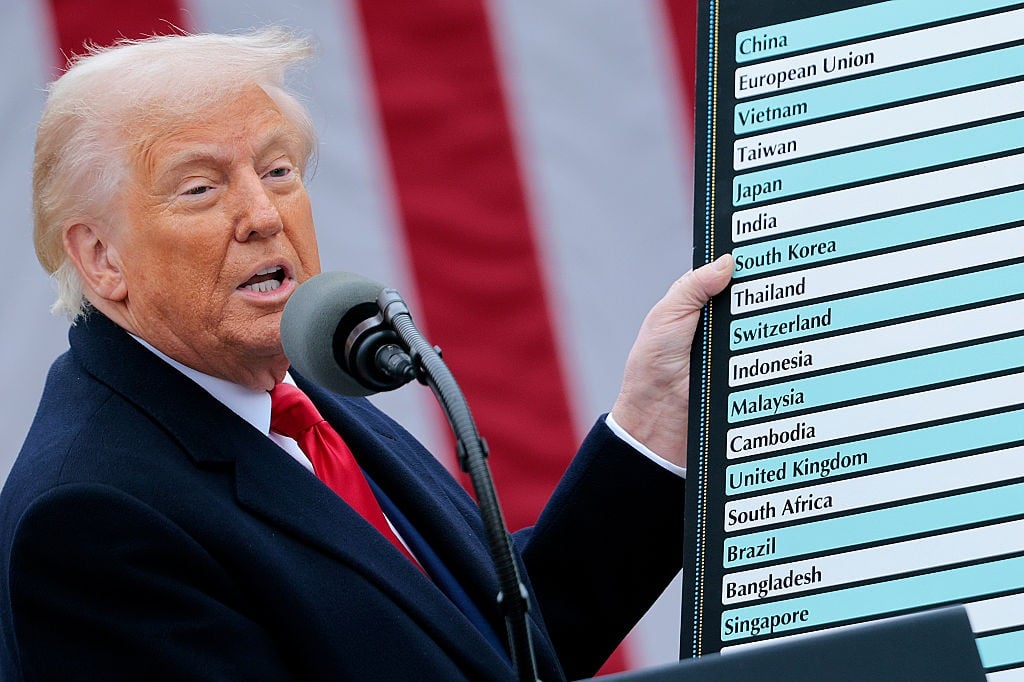
US President Donald Trump holds up a chart of the reciprocal tariffs (Photo by Chip Somodevilla/Getty Images)
In a statement published Wednesday night to explain its methodology for tariffs that rocked the globe, the United States Trade Representative (USTR) detailed a formula that divides a country’s trade surplus with the US by its total exports, based on data from the US Census Bureau for 2024. And then that number was divided by two, producing the “discounted” rate.
China, for instance, had a trade surplus of $295 billion with the US last year on total exports of $438 billion — a ratio of 68%. Divided by two according to Trump’s formula, that yielded a tariff rate of 34%. The same calculations roughly produced the rates for other economies like Japan, South Korea and the European Union.
READ | Trump targets South African exports with 30% tariffs
Countries where the US runs a trade surplus were also hit, facing a flat 10% rate regardless, as did nations where trade was roughly even.
The USTR statement said that while it was technically possible to calculate rates for actual barriers, this methodology would achieve Trump’s goal of driving down trade deficits.
“While individually computing the trade deficit effects of tens of thousands of tariff, regulatory, tax and other policies in each country is complex, if not impossible, their combined effects can be proxied by computing the tariff level consistent with driving bilateral trade deficits to zero,” said the statement, which was unsigned.
Trump unveiled a range of tariffs in the Rose Garden on Wednesday by flipping around a placard with a series of rates based on “tariffs charged to the USA” and, at half the rate, the “discounted reciprocal tariff.”
The method for calculating the tariffs had been largely unknown in the run-up to Trump’s announcement. Adding to the confusion, the rates released by Trump differed slightly from those in the annex accompanying Trump’s executive order. South Korea, for instance, was listed at 25% on Trump’s board and 26% in the annex.


